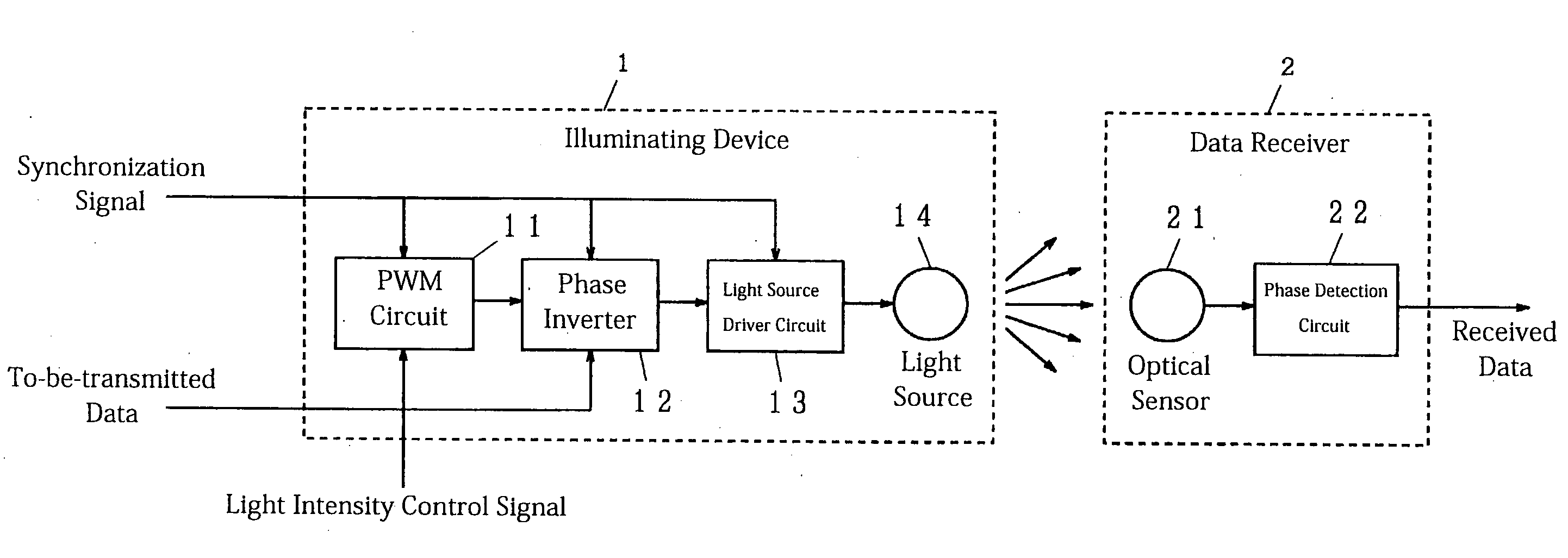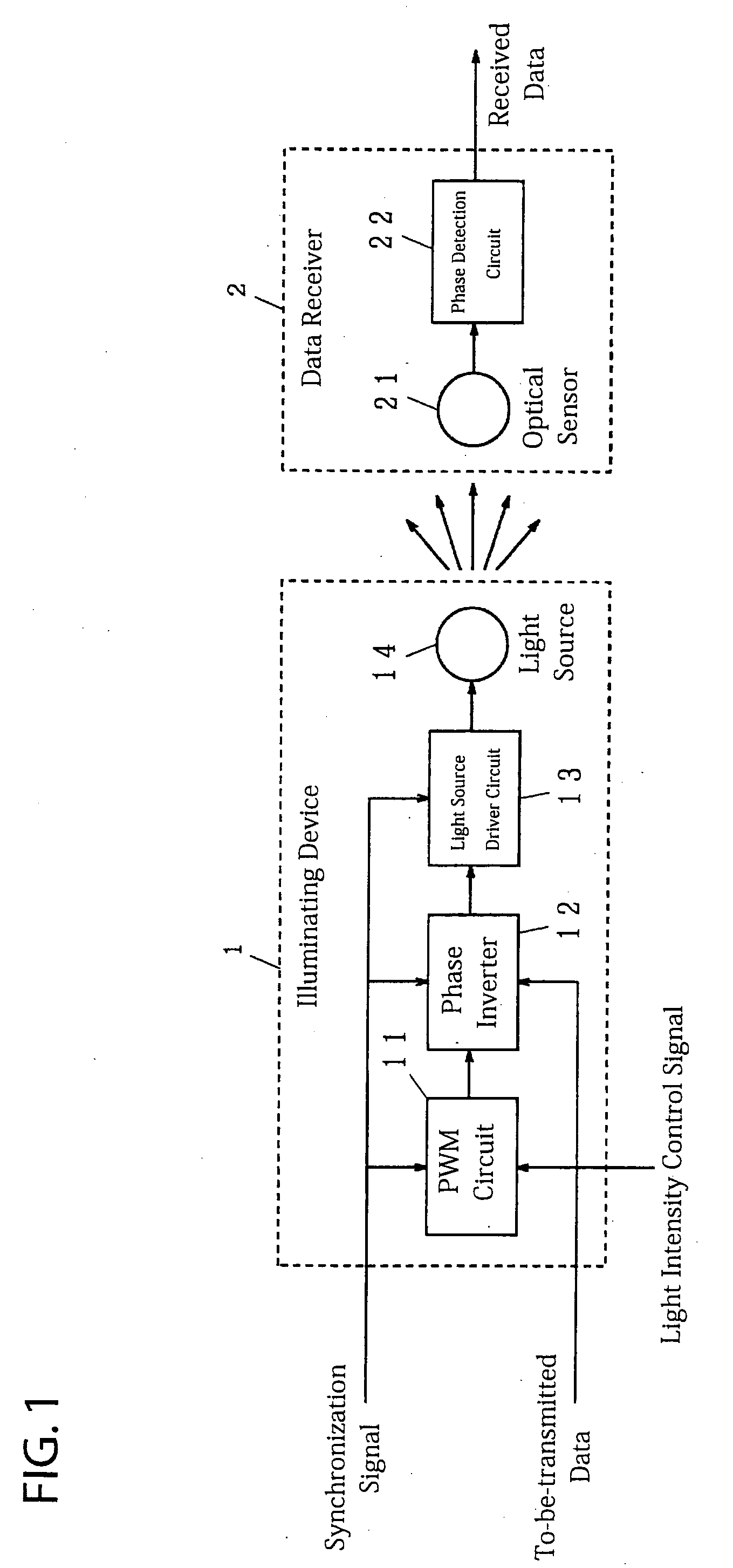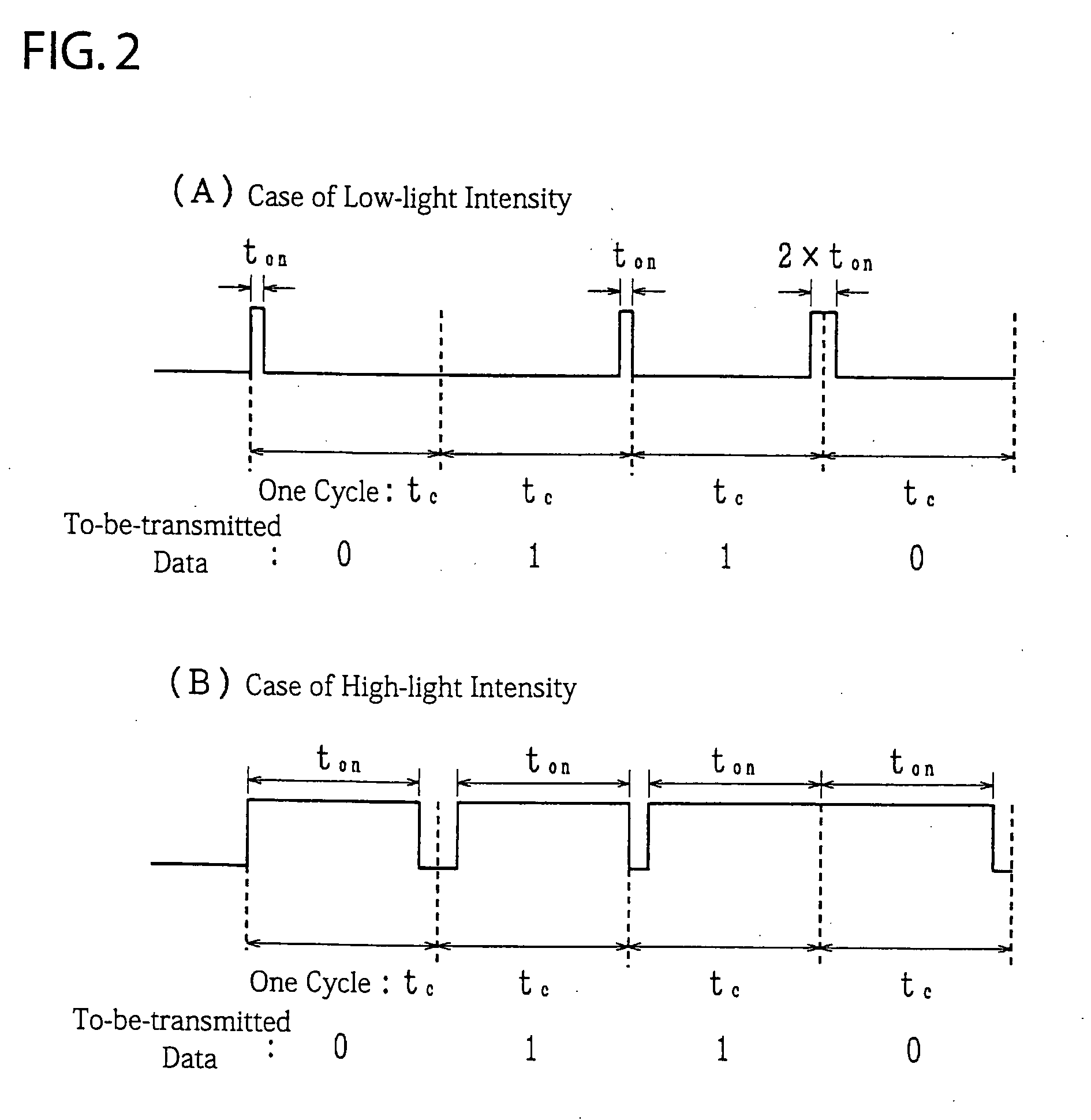Data Transmission Apparatus and Data Reception Apparatus
- Summary
- Abstract
- Description
- Claims
- Application Information
AI Technical Summary
Benefits of technology
Problems solved by technology
Method used
Image
Examples
first embodiment
[0030]An example of an operation of the first embodiment according to the present invention is described forthwith. A light intensity control signal corresponding to a desired intensity of light is input to the PWM circuit 11. The PWM circuit 11 generates a PWM signal as shown in FIG. 11, for example.
[0031]The generated PWM signal is transmitted to the phase inversion circuit 12, next. A to-be-transmitted data signal or a digital value made of Os and / or 1 s is input to the same phase inverter 12. The phase inverter 12 outputs the PWM signal directly when the to-be-transmitted data signal is 0, for example, whereas it outputs an inverted signal of the PWM signal when the to-be-transmitted data signal is 1. Needless to say that the phase may be inverted when the to-be-transmitted data signal is 0, whereas it may not be inverted and output when 1.
[0032]The light source driver circuit 13 generates a driving electric current in proportion to a signal from the phase inverter 12, which the...
second embodiment
[0054]Exemplified processing of the second embodiment according to the present invention is briefly described forthwith. The PWM circuit 11 generates a PWM signal based on a light intensity control signal corresponding to the observed light intensity. The generated PWM signal is then transmitted to the rising edge timing control circuit 15. The rising edge timing control circuit 15 controls the rising edge of the PWM signal in conformity with to-be-transmitted data; more specifically, it controls so that the rising edge falls in a time slot for the to-be-transmitted data as shown in FIG. 6, for example. The light source driver circuit 13 drives the light source 14 in conformity with this signal, and the light source 14 then emits a visible light modulated based on the to-be-transmitted data. In sync therewith, the synchronization signal light source 16 is driven according to a synchronization signal, emitting an synchronization infrared light signal.
[0055]In the data receiver 2, the...
third embodiment
[0063]Exemplified processing of the third embodiment according to the present invention is briefly described forthwith. The PWM circuit 11 generates a PWM signal based on a light intensity control signal corresponding to an observed light intensity. The generated PWM signal is transmitted to the phase inverter 12, which then inverts the phase thereof according to to-be-transmitted data appropriately. The phase-inverted PWM signal is transmitted to the oscillator 17, which then. generates a signal oscillating with a subcarrier frequency when the pulse signal is in an ON state. As a result, signals as shown in FIG. 8, for example, are generated. FIG. 8(A) shows the case of low-light intensity, while FIG. 8(B) shows the case of high-light intensity. In either case, a waveform with the subcarrier frequency is generated while the respective signals shown in FIG. 2 are in an ON state. In conformity with this signal, the light source driver circuit 13 drives the light source 14, which thus...
PUM
 Login to View More
Login to View More Abstract
Description
Claims
Application Information
 Login to View More
Login to View More - Generate Ideas
- Intellectual Property
- Life Sciences
- Materials
- Tech Scout
- Unparalleled Data Quality
- Higher Quality Content
- 60% Fewer Hallucinations
Browse by: Latest US Patents, China's latest patents, Technical Efficacy Thesaurus, Application Domain, Technology Topic, Popular Technical Reports.
© 2025 PatSnap. All rights reserved.Legal|Privacy policy|Modern Slavery Act Transparency Statement|Sitemap|About US| Contact US: help@patsnap.com



